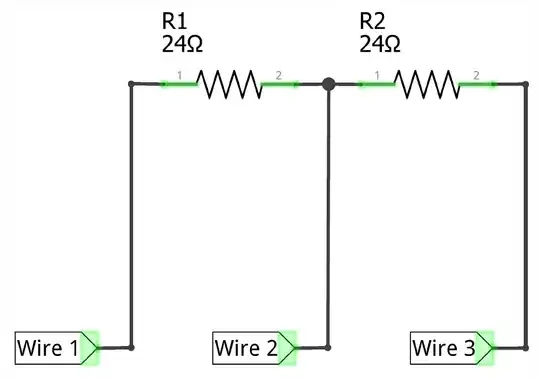I am currently heating a silicone heat bed through the 110v/220v AC mains and for some reason it only seems to heat up to 70°C, but it is heating the bed evenly. The power supply I am using is 24v power supply with the power turned up. The SSR has not been heating up at all during use, so could it be that it's not getting enough power even through the mains?
-
1You should provide more context, link your original question (@mick - The heat bed of this user was already subject to scrutiny, if you want to read more: https://3dprinting.stackexchange.com/q/5422/9134) explain what have you tried of the suggestions given there, etc... otherwise it's unlikely you will receive much different input that you already did. – mac Feb 12 '18 at 09:15
-
51. What voltage is mains power in your country? 2. How did you hook up the heated bed? 3. **Please don't hook stuff up to the mains unless you know what you're doing.** Seriously, "this combination of hooking the wires up didn't work, so let's try this other combination" *isn't* how you deal with mains electronics. – Tom van der Zanden Feb 12 '18 at 11:27
-
I am voting to close this question as "unclear what you're asking". At a minimum, we would need to know the mains voltage in your country, a wiring diagram of how you hooked things up and it would also be useful if you measured the resistance of the bed with a multimeter (between all possible pairs of wires, if applicable). – Tom van der Zanden Feb 14 '18 at 10:06
-
Possible duplicate of [Heat bed troubles](https://3dprinting.stackexchange.com/questions/5422/heat-bed-troubles) – Sean Houlihane Feb 27 '18 at 08:13
1 Answers
Preface: Working with mains voltage is dangerous. I'm writing this answer based off limited and incomplete information about your situation. Mains voltage can kill. Be careful, and get help from somebody else if you're not 100% certain of what you're doing. Make sure to connect to protective earth any exposed metal surfaces of your printer.
I think that the heated bed you have is a dual voltage bed, meaning it can be used with either a 110V supply or with a 220V supply. It has three wires, and internally, these are connected as follows (resistances are a guess, this would correspond to a 1000W bed):
Because this is a dual-voltage bed, there are three wires. You need to hook up the correct combination of wires to get the correct power rating - and this depends on the mains voltage in your country.
The formula for power P dissipated by a resistance R across a voltage V is P = V2/R. We can see, that if we apply 220V across wire 1 and wire 3 we get a power dissipation of 2202 / 48 = 1000 Watts (because the resistors are in series, we get a resistance of 24+24=48 Ohms).
So, in a 220V country, the wiring is easy: just connect wires 1 and 3 to live and neutral. Note: in a 220V country, don't make the mistake of connecting any other pair of wires. If you instead connect wire 1 and 2 to the mains, your heated bed will draw 4000W. This will (should) trip the circuit breaker/fuse, and possibly damage the bed or start a fire.
So, what does a person in a 110V country do? What happens if you connect 110V across wires 1 and 3? You get a power dissipation of 1102 / 48 = 250 Watts. That's only a quarter of the bed's power, so it's not going to get very hot (not even up to the 70 degrees you observed, I would think).
So what if, instead, we hook 110V across wires 1 and 2? In that case, we have 110V across a 24 Ohm resistor, so we get a power dissipation of 1102 / 24 = 500 Watts. Better, but still not enough to get a bed this large up to temperature.
So, how are you supposed to get the full 1000W rating of this bed in a 110V country? You need to connect the two resistors in parallel!
If you connect wires 1 and 3 together, and connect wire 2 to one side of the mains supply and wires 1 and 3 to the other, you get two 24 Ohm resistors in parallel, each dissipating 500W, giving you the total output of 1000W (or equivalently: two 24 Ohm resistors in parallel make a 12 Ohm resistor, which will dissipate 1102 / 12 = 1000W).
You should use a multimeter to measure the resistance between the wires. Out of the three possible combinations, two should give roughly the same reading (in the 20-40 Ohms range), and one combination should give roughly double that value. This latter combination identifies wires 1 and 3. These wires should be connected together in a 110V country.
- 14,588
- 2
- 33
- 60
